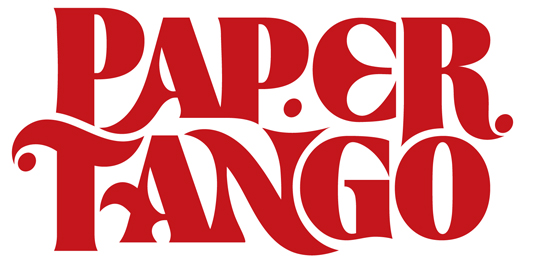Creative
Vision
Each bespoke project starts with a creative brief. Sometimes the brief can be very prescriptive and other times it can be quite vague and open to interpretation. Paper Tango works with clients to get a steer on stylistic look and feel and if not already determined will propose print techniques and paper options to achieve the best results.
Hand-cut
Designs
The paper engineering process involves lots of problem solving. All the folds within the pop-up must collapse flat and they must ensure that they are hidden within the confines of the outer cover.
All the detailing must also be within the clearspace of glue and minimum trimming areas. It is for these reasons that this stage takes considerable time to figure out.
Many printouts are made which are all hand-cut, hand-scored and hand-folded. It is a time consuming process which unfortunately cannot be shortcut.
Once the initial paper engineering is complete the hand-cut design options are photographed and sent to the client.
Changes and refinements are made inline with the client’s feedback.
A second or even third round of hand-cut designs are made for sign-off from the client before proceeding to laser-cut prototyping.
Hand-cut design front view
Hand-cut design top view
Manufactured
Prototyping
Once the hand-cut design is approved the next stage involves manufactured laser-cut prototyping.
Finished artwork is created and sent to the laser-cutter to test on the client’s chosen paperstock.
Even though hand-cut prototyping can test the folding mechanisms it is not until a laser-cut prototype is made that you can be sure that the pop-up works correctly.
Inevitably this stage involves several rounds of prototyping as it is necessary to strike a balance between laser-cut detail and paper rigidity. Too much detail will render the paper weak which may result in damage in the hand assembly process.
Laser-cut prototype on client’s chosen paperstock
Example of too much detail next to a fold line which is creating damage to the paper.
Laser-cutting
and Print Production
Once the laser-cut prototype is approved the next stage is print production. Depending on the parameters of the project this stage involves either digital or litho printing and either laser-cutting or die-cutting. Generally due to the elaborate detailing on our pop-up cards we tend to use laser-cutting.
Laser-cutting machine
Laser-cutting machine in action
Gold foiling on press
Hand
Assembly
The laser-cut cards and printed covers are then delivered to us for hand assembly.
Each printout is meticulously quality controlled to check for marks, dents or misalignments that may occur on press.
Each printout is then individually hand-folded, hand-glued and trimmed one-by-one with a hand operated guillotine.
Gold-foiled and laser-cut printouts ready for hand assembly
Each printout is folded by hand in our London studio. Depending on complexity of the folding design this process can take anywhere from 30 seconds to 10 minutes.
Each card is individually trimmed to ensure clean edges.
Finished
Product
Each card is quality controlled for a final time and then carefully packed for delivery.
Extra special care is taken to secure packages for international shipping.
And now for the final result…
Finished wedding invitation ready to send to the USA.













